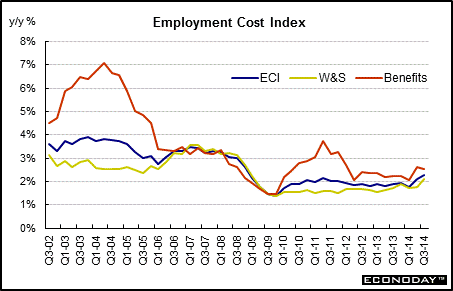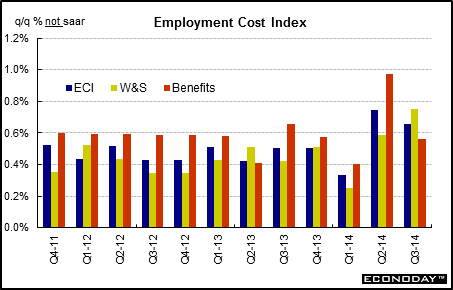
|
Long Term Perspective The employment cost index is the most comprehensive measure of compensation costs faced by employers. Wages and salaries account for the bulk of the index, whereas benefits costs account for about one-third of compensation costs. Fed officials monitor this indicator because they believe that accelerating pressures on compensation costs will eventually lead to increases for prices of consumer goods and services.
Employment cost inflation had been on a downtrend from 2004 through 2009 as the recent recession weighed on labor costs. Despite a sluggish recovery in 2010 and 2011, employment cost inflation picked up in latter 2010 and 2011 due to a jump in benefits costs.
Short Term Perspective The employment cost index increased 2.3 percent year-on-year in the third quarter of 2014, up from the 2.1 percent pace in the prior quarter. Employment cost inflation was somewhat higher from a record low pace of 1.4 percent in the fourth quarter of 2009 for a series going back to 1982. But employment cost inflation is still soft. However, there is new debate on whether employment costs are low due to non-hiring or not or reduced hours (trigger hours to obtain certain benefits) related to new health care requirements for full-time employees.
On a quarterly, not annualized basis, overall employment compensation jumped 0.7 percent in the third quarter of 2014, matching the pace in the prior period. The wages & salaries component posted at 0.8 percent in the latest quarter while benefits costs increased 0.6 percent.
|
|||||||
| Legal Notices | ©Copyright 1998-2024 Econoday, Inc. |
powered by
![[Econoday]](images/logo.gif)
![[Apple App Store]](/images/AppleAppStore.png) ![[Econoday on Kindle]](/images/kindle.jpg) 
|
||||||

